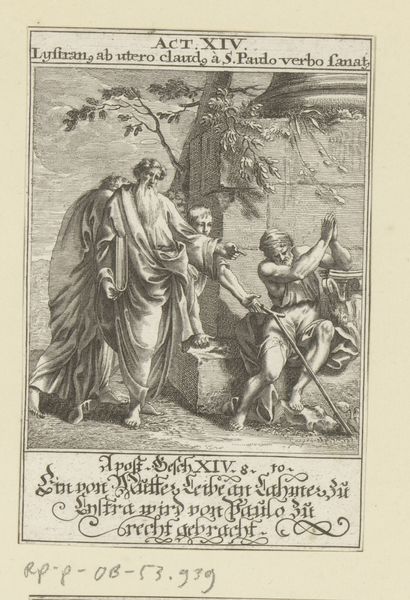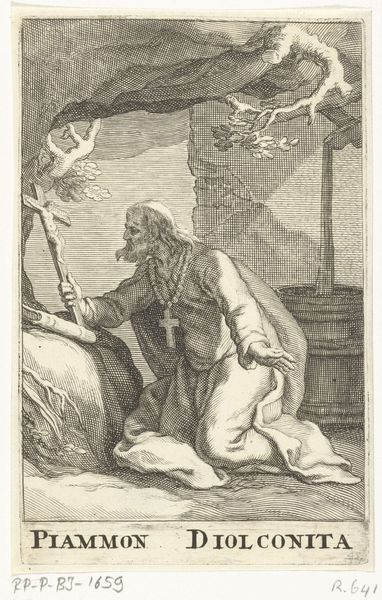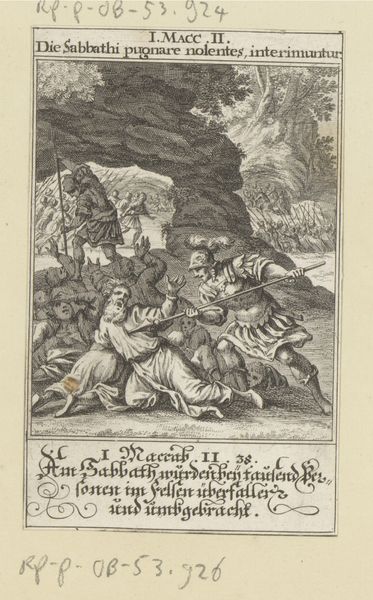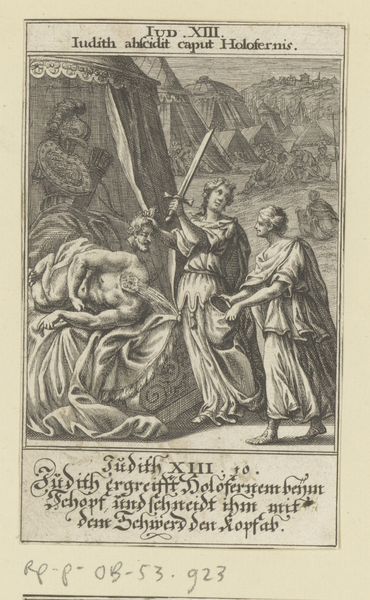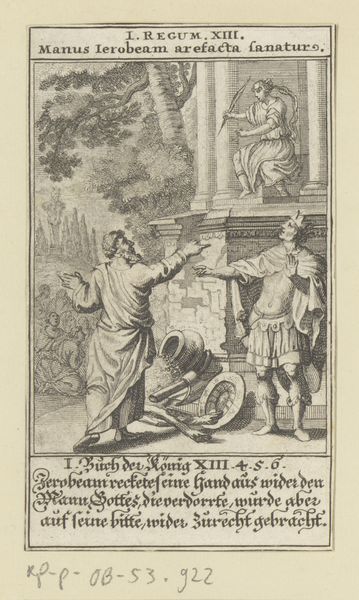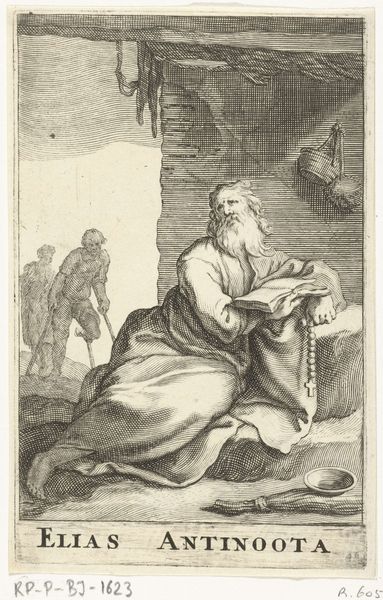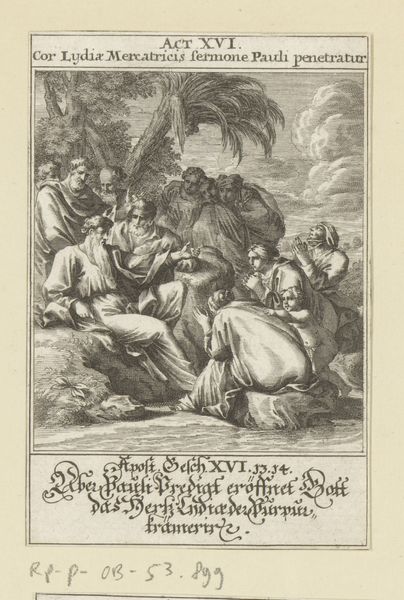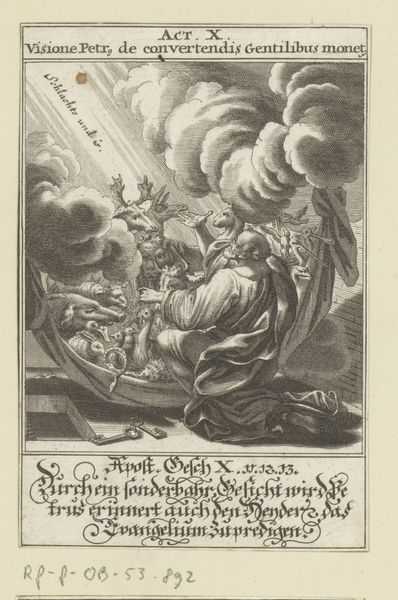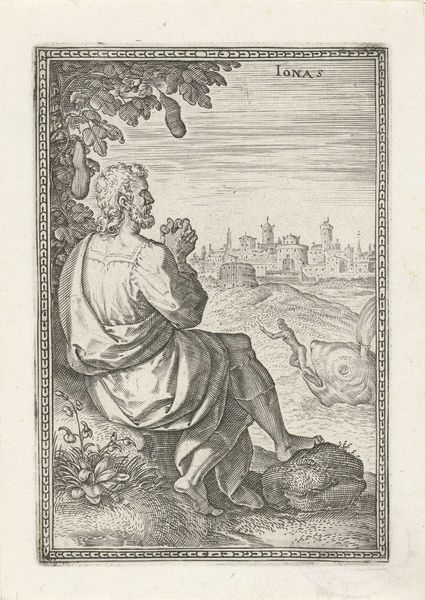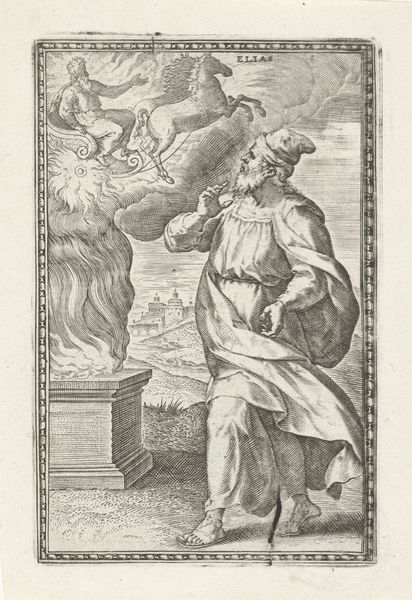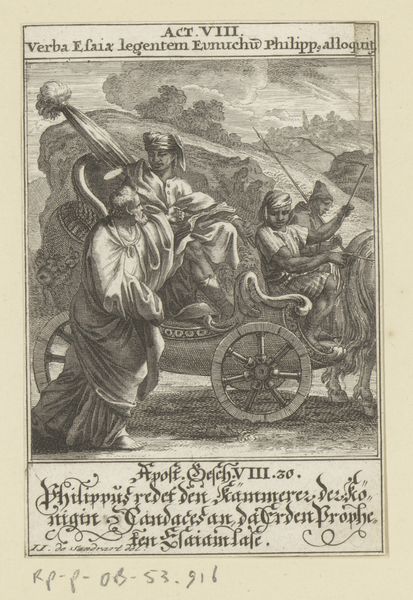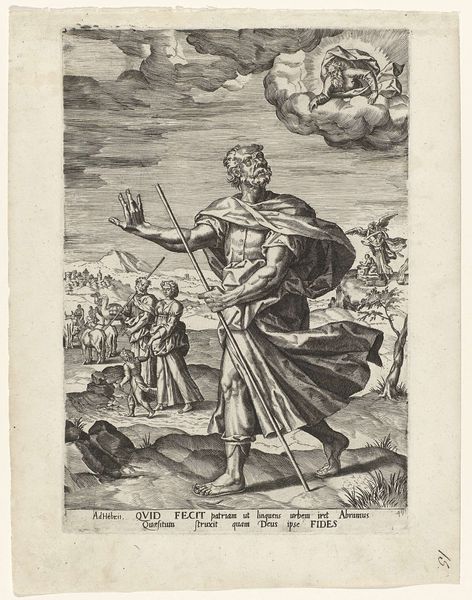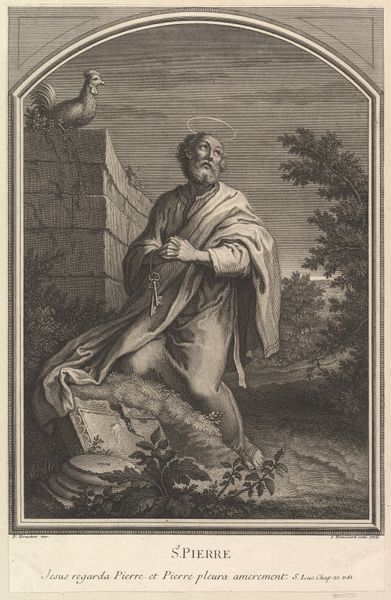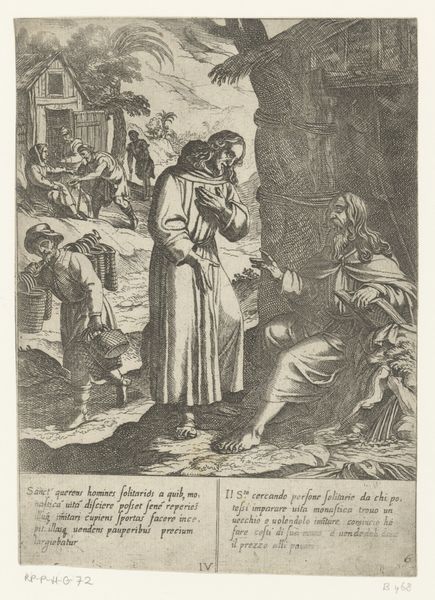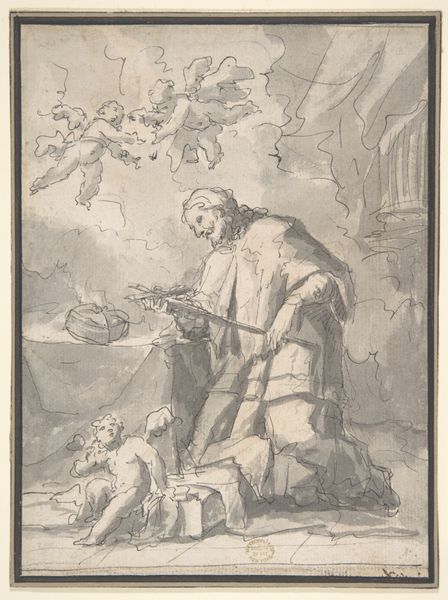
print, paper, ink, engraving
#
portrait
#
aged paper
#
narrative-art
#
baroque
#
parchment
# print
#
paper
#
ink
#
old-timey
#
history-painting
#
golden font
#
engraving
#
historical font
Dimensions: height 121 mm, width 80 mm
Copyright: Rijks Museum: Open Domain
Editor: This is "Apostel Johannes schrijft zijn epistel," from 1697, made with engraving and ink on paper. It's so intricate, you can almost feel the weight of the paper. How would you approach understanding this piece? Curator: Considering its materiality, let's delve into the socioeconomic context of printmaking at the time. Engravings like this were products of workshops. How do you think the division of labor within that workshop impacted the artistic expression, if at all? Editor: That's interesting. I guess I hadn't considered the labor aspect of what feels like a very individual and almost solitary act. It almost challenges the notion of the singular artist. Curator: Precisely. Think about the engraver's skill, the quality of the paper, and the accessibility of ink. These elements reveal much about the trade networks, the artisan’s training, and even the intended audience. Is this a luxury item, or more accessible to the wider public, influencing the reach of its message? Editor: It's amazing how looking at the materials used and the process itself opens up a completely different understanding of the work and its historical moment. Did this process democratize art production? Curator: Indeed. Prints like this one allowed for wider dissemination of images and ideas, compared to unique paintings or sculptures. However, let's remember that even printmaking required specific tools and knowledge. Who possessed these and how they circulated is an important element to consider when talking about art production. Editor: So it’s not just about the image itself, but the whole network of production and consumption. Thank you, I'll never look at prints the same way! Curator: Precisely! By focusing on the material conditions of its creation, we've illuminated aspects of production often overlooked.
Comments
No comments
Be the first to comment and join the conversation on the ultimate creative platform.
